In a previous ideabook, I introduced you to the conservatories at Longwood Gardens in Kennett Square, Pennsylvania. In this one, I'm going to share the pathways of these magnificent gardens.
Longwood Gardens can be a difficult place to photograph, not just because of the crowds and lighting difficulties, but because it is such a wonderful garden. A garden done correctly is not just a showpiece but an experience. It leads you from place to place, from plant to plant, into mystery and out of darkness. Longwood Gardens is one of the few gardens in the world that can masterfully take you on a journey from an Italianate, laced-up rose garden to a thoroughly American trail through the woods. Those twists and turns make for an excellent garden experience but can sometimes hinder a photographer attempting to capture the garden as a whole. Perhaps next time I should take a helicopter.
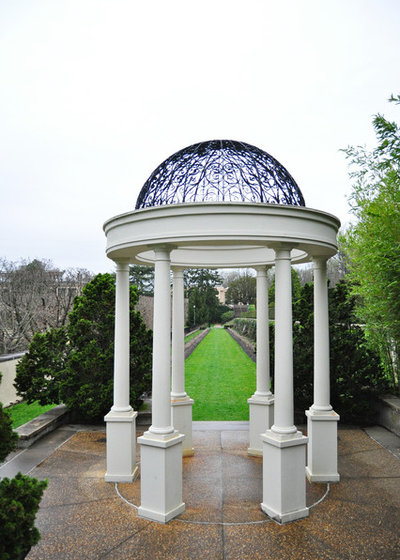
Amy Renea
Longwood combines structure with well-laid pathways that lead the eye and invite visitors to explore. Notice the way the floor is laid to accentuate the circular layout of the metal-domed gazebo. Also notice the way the gazebo opens to perfectly frame the grass pathway beyond.
To see another example of an intricately carved metal-roofed gazebo, check out the Sunken Gardens of Lincoln, Nebraska.
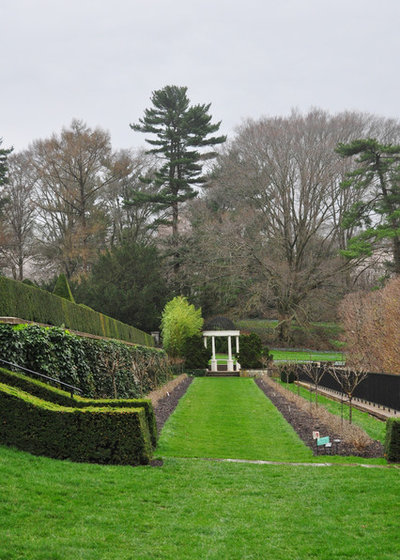
Amy Renea
Here is the opposite end of the pathway, edged with formal hedging. The hedges are various varieties of plants, terraced up the hill to the left. The use of sheared hedges in this pathway is a nod to the sheared topiary forms in the next room of the garden.
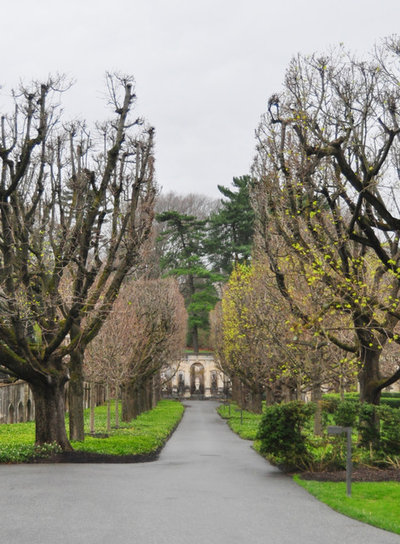
Amy Renea
Grass pathways are used in low-traffic areas, but good 'ol blacktop is used in high-traffic areas. Notice how the design draws your eye up and away from the blank slate of a path. The trees are pruned to grow up rather than out, leading your eye to the statuary at the end of the path.
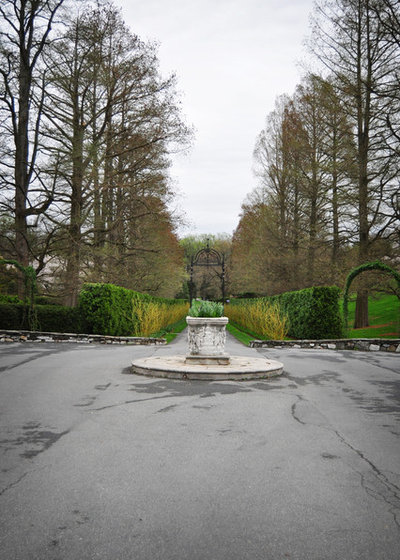
Amy Renea
Here is another example of a blacktop pathway, broken up with a roundabout. Notice the yellow dogwood in the background, highlighting a darker part of the path and giving depth to a straightforward walkway.
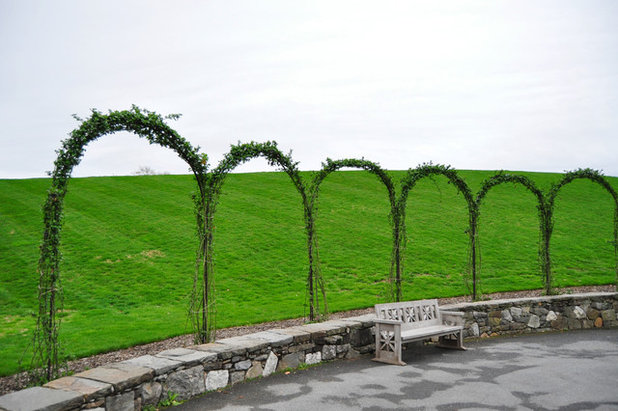
Amy Renea
On the opposite side of the roundabout is a grass-covered hill and trellised vines. With simple iron arches, the designer has created a focal point and a showstopping climbing apparatus.
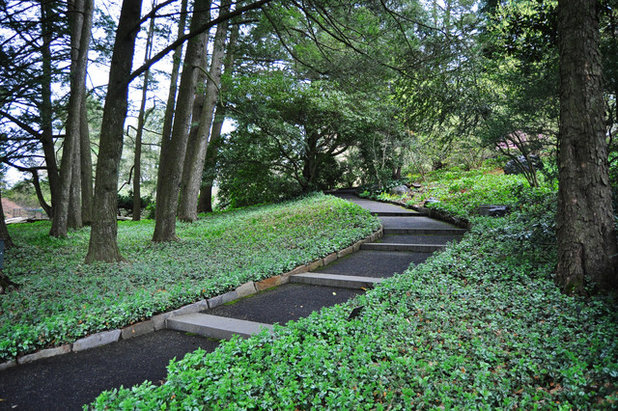
Amy Renea
Elsewhere in the gardens, climbing paths are made from a combination of blacktop and stone. The steps are wide and long, creating more of a strolling walkway that happens to ascend, rather than a staircase. The slow pace allows visitors to look around the woodland garden while gently climbing the hill.
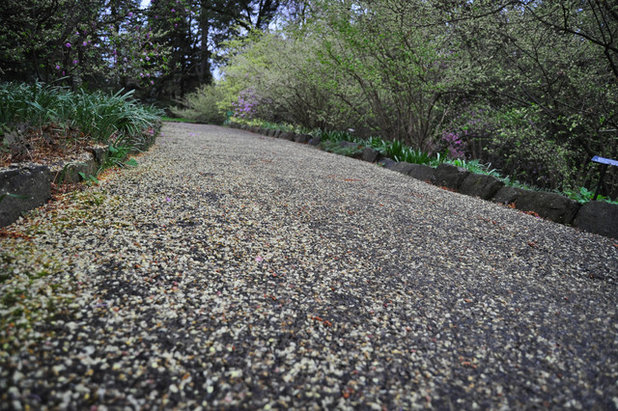
Amy Renea
I visited the gardens at the height of springtime, so many of the paths were covered with blossoms from the surrounding trees.
When you are planting pathways, consider the possible droppings from the plantings. Fruit-bearing bushes, for example, might drop jewel-colored, juicy fruits all over your walkways in summer. In contrast, a simple yew will hold its needles through the winter and create very little mess.
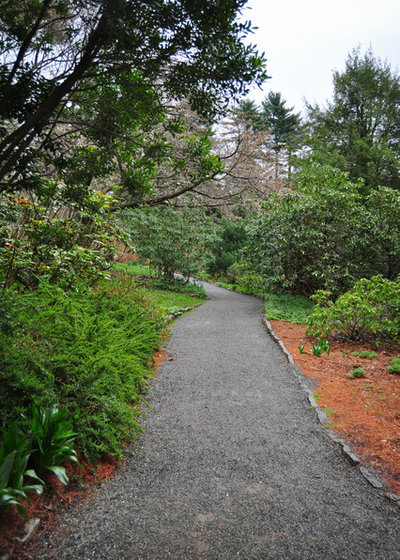
Amy Renea
Perhaps you have been inspired by the pathways of Longwood. I know I am rethinking my hillside paths. Those elongated cement steps might work perfectly in my backyard. You might decide to rethink plantings or change your pruning methods to create a pathway.
Pathways are the civilized extension of a wild garden and can make or break the experience for your visitors. Give them focal points, consider walking habits and patterns, and create magical pathways in your own garden this year.
More:Create an Inviting, Protected Pathway





